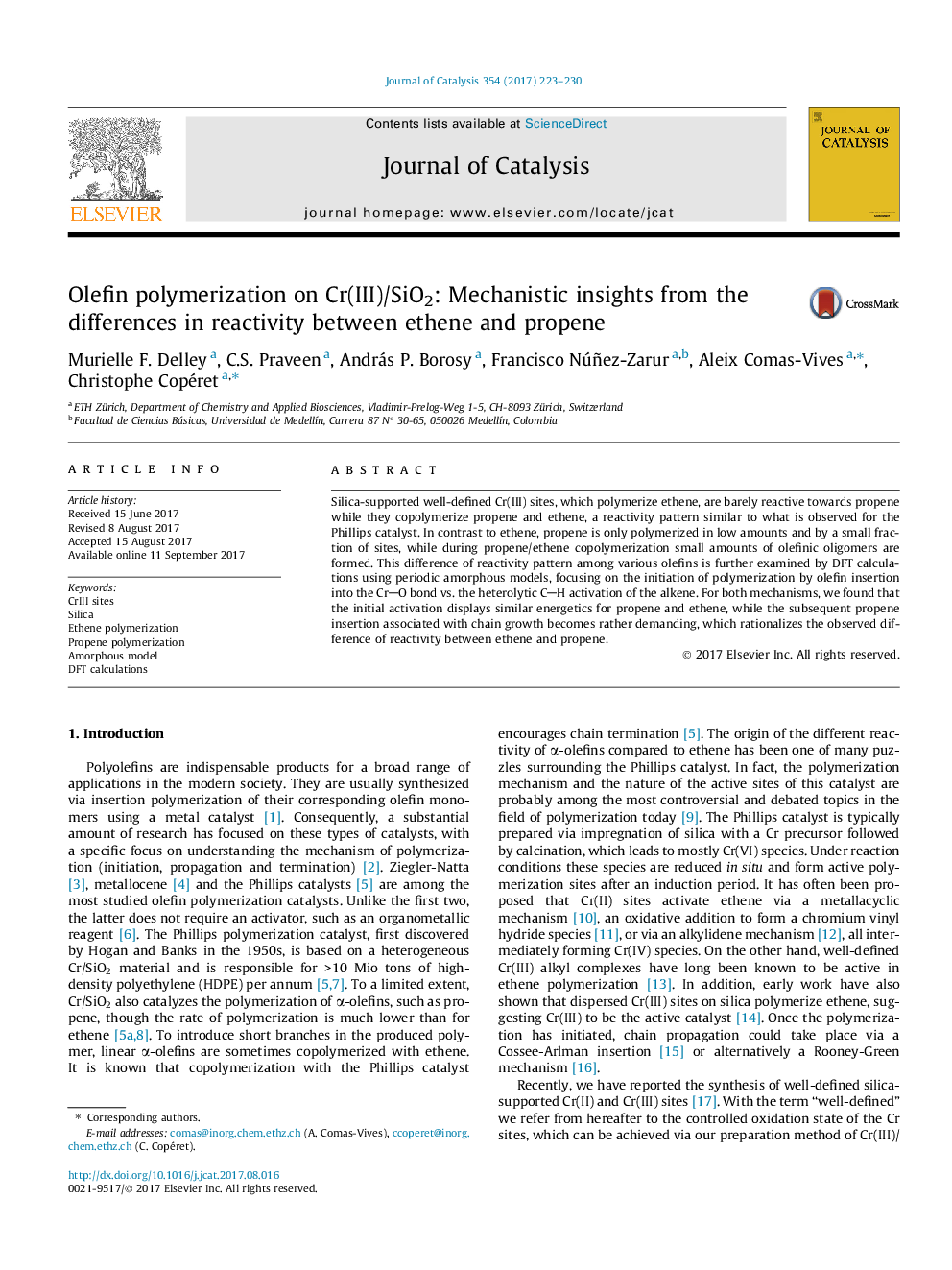| Article ID | Journal | Published Year | Pages | File Type |
|---|---|---|---|---|
| 6455514 | Journal of Catalysis | 2017 | 8 Pages |
â¢Cr(III)/SiO2 is active in ethene polymerization but barely polymerizes propene.â¢The catalyst co-polymerizes ethene/propene mixtures forming small amounts of olefinic oligomers.â¢DFT calculations using a periodic amorphous model for rationalizing the observed reactivity.â¢Higher activation energies for propene insertion into the CrC bond vs. ethene.
Silica-supported well-defined Cr(III) sites, which polymerize ethene, are barely reactive towards propene while they copolymerize propene and ethene, a reactivity pattern similar to what is observed for the Phillips catalyst. In contrast to ethene, propene is only polymerized in low amounts and by a small fraction of sites, while during propene/ethene copolymerization small amounts of olefinic oligomers are formed. This difference of reactivity pattern among various olefins is further examined by DFT calculations using periodic amorphous models, focusing on the initiation of polymerization by olefin insertion into the CrO bond vs. the heterolytic CH activation of the alkene. For both mechanisms, we found that the initial activation displays similar energetics for propene and ethene, while the subsequent propene insertion associated with chain growth becomes rather demanding, which rationalizes the observed difference of reactivity between ethene and propene.
Graphical abstractDownload high-res image (84KB)Download full-size image
